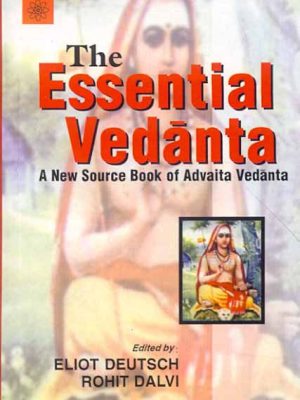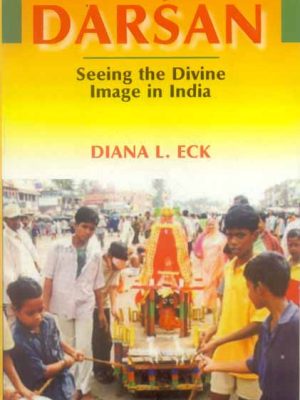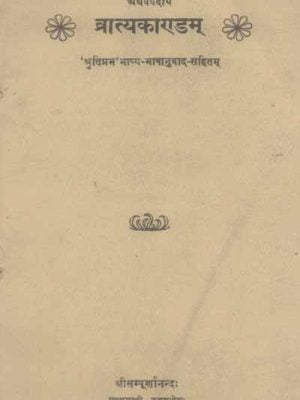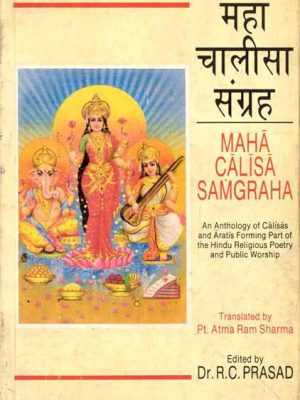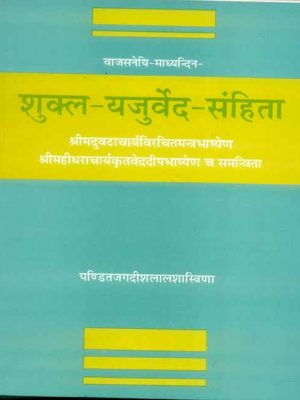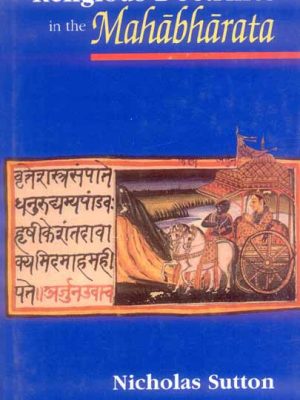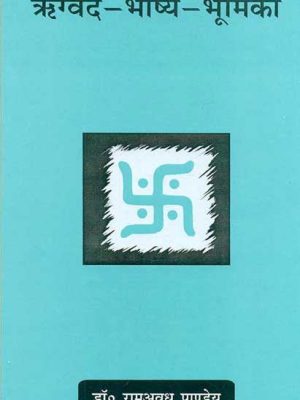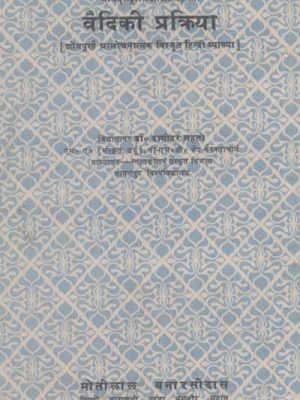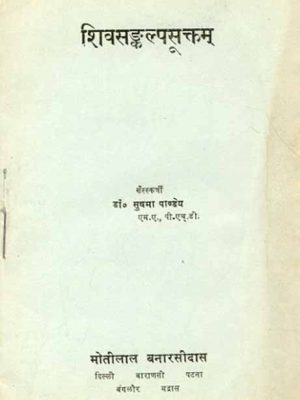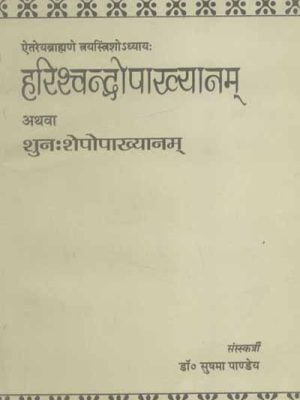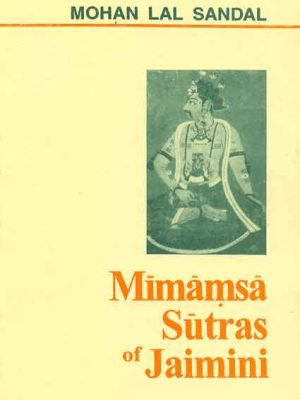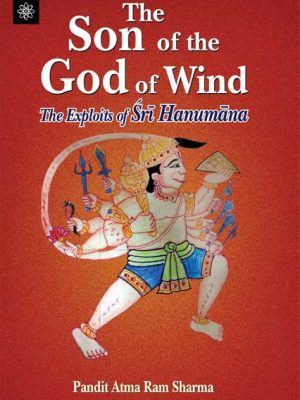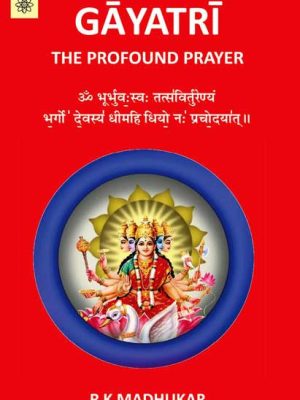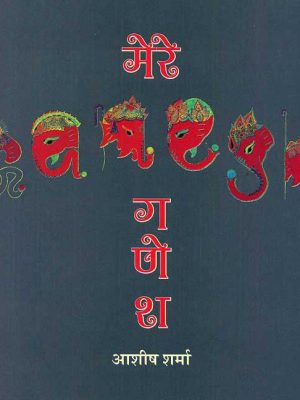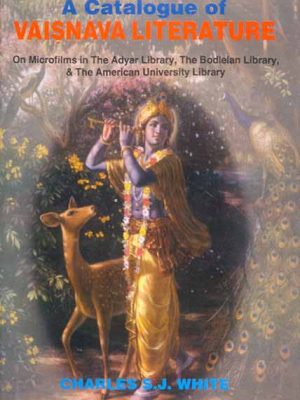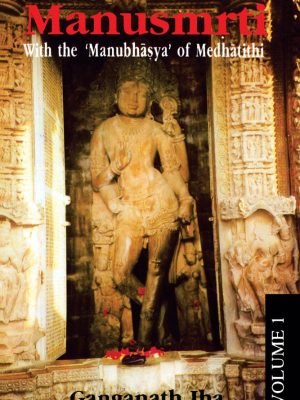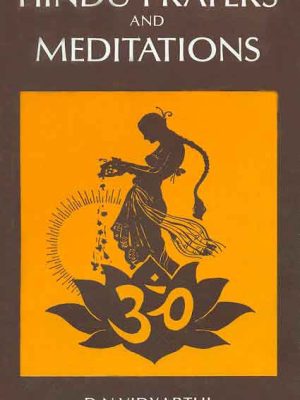Motilal Banarsidass
-
The Essential Vedanta: A New Source book of Advaita Vedanta
The Essential Vedanta: A New Source book of Advaita Vedanta
The Essential Vedanta is a comprehensive introduction to the tradition of Advaita Vedanta based upon primary sources and makes possible a study of it in its classical form. Translations from all major sanskrit writings are included as well as selections from all of the most important representatives of this central philosophy of India.
About the Author(s)
Rohit Dalvi
₹450.00 -
Darsan
Darsan
The experience of the divine in India merges the three components of sight, performance, and sound. This book is about the power and importance of “seeing” in the Hindu religious tradition. In the Hindu view, not only must the gods keep their eyes open, but so must we, in order to make contact with them, to reap their blessings, and to know their secrets. When Hindus go to temple, their eyes meet the powerful, eternal gaze of the eyes of God. It is called Darsan, “Seeing” the divine image, and it is the single most common and significant element of Hindu worship. This book explores what darsan means. This is also a book about the divine image in the Hindu tradition. What do Hindus see in the images of the gods? What is meant by these multi-armed gods, with their various weapons, emblems, and animals? How are these images made and consecreted? How are they treated in a ritual context? In exploring the nature of the divine image, this book not only considers the images of the gods, but also the Hindu temple and the Hindu place of pilgrimage.
Author
DIANA L. ECK
₹295.00Darsan
₹295.00 -
Kathopanishad (Pratham Bhag): Shankar Bhashya [Bhumika, Anvaya, Hindi Anuvad, “Vandna” Vyakhya aur Tippani Sahit
Kathopanishad (Pratham Bhag): Shankar Bhashya [Bhumika, Anvaya, Hindi Anuvad, “Vandna” Vyakhya aur Tippani Sahit
Author
Baijnath Pandey
₹100.00 -
Vratyakanda-Atharvaveda: Sanskrit-Hindi Vyakhya
Vratyakanda-Atharvaveda: Sanskrit-Hindi Vyakhya
Vratyakanda-Atharvaveda: Sanskrit-Hindi Vyakhya
Author
VISHWANATH VIDYALANKAR
₹495.00 -
Maha Calisa Samgraha: An Anthology of Calisas and Aratis forming part of the Hindu
Maha Calisa Samgraha: An Anthology of Calisas and Aratis forming part of the Hindu
A Calisa is a 40-verse song dedicated to the many manifestations of Visnu and other powerful deities, such as the goddesses. It’s obvious that these are songs of devotion. introduction and notes to a significant source of reference on Hinduism. Maha Calisa Samgraha: An Anthology of Calisas and Aratis forming part of the Hindu
Author
₹295.00 -
Shukla-Yajurved-Samhita
Shukla-Yajurved-Samhita
The Yajurveda Samhita or the prayer book of the Adhvaryu priest is recorded to have had as many as 101 recensions at the time of the grammarian Patanjali, out of which, only 5 have survived and are available at present, viz., Kathaka,Kapisthala, Maitrayani, Taittiriya, and Vajasaneyi, the first four belonging to the ‘Black Yajurveda’ and the fifth to what is designated as ‘White yajurveda.’ The Vajasaneyi Samhita which takes its name from Yajnavalkya Vajasaneya, the chief teacher of this Veda, has come down in two slightly differing versions known as the Kanva and the Madhyandina Samhitas. The chief difference between the texts of the ‘Black’ and ‘White’ Yajurveda lies in the fact that the latter contains only the Mantras, i.e., the prayers and sacrificial formulae which the priest has to utter, while the former contains in addition a presentation of the sacrificial rites belonging to them as well as the Brahmana or theological discussion on the same.
About the Author(s)
VENI RAM SHARMA GAUD
₹1,295.00Shukla-Yajurved-Samhita
₹1,295.00 -
Religious Doctrines in the Mahabharata
Religious Doctrines in the Mahabharata
In this new edition of a classic text on the Mahabharata, the primary concepts and themes are discussed and evaluated. unique take on one of India’s best-known epics. A lot of positive feedback.
Author
Nicholas Sutton
₹795.00 -
Rigveda-Bhashya-Bhumika: Hindi Anuvad Sahit
Rigveda-Bhashya-Bhumika: Hindi Anuvad Sahit
Rigveda-Bhashya-Bhumika: Hindi Anuvad Sahit
Author
Ramavadh Pandey
₹225.00 -
Kenopanishad: Mantra, Padachched, Anvaya, Shabd, Shabdarth, Bhavarth, Vyakhya aur Angreji anuvad sahit
Kenopanishad: Mantra, Padachched, Anvaya, Shabd, Shabdarth, Bhavarth, Vyakhya aur Angreji anuvad sahit
Author
Yamuna Prasad Tripathi
₹100.00 -
Vediki Prakriya: Shodhpurna Alochanatamak Vistrit Hindi Vyakhya
Vediki Prakriya: Shodhpurna Alochanatamak Vistrit Hindi Vyakhya
Vediki Prakriya: Shodhpurna Alochanatamak Vistrit Hindi Vyakhya
Author
Damodar Mehto
₹375.00 -
-
Harishchandropakhyanam: Athva Shunah Sheshopakhyanam
Harishchandropakhyanam: Athva Shunah Sheshopakhyanam
Harishchandropakhyanam: Athva Shunah Sheshopakhyanam
Author
Sushma Pandey
₹100.00 -
Mimamsa Sutras of Jaimini
Mimamsa Sutras of Jaimini
One of the most important ancient Hindi philosophical writings is Jaimin’s Purva Mimamsa Sutras. Indian philosophy is based on Mimamsa, the first of the six orthodox (Dars’anas) schools. The complete work is divided into twelve adhydyces (chapters) which are further divided into sixtypadas (sections). Besides presenting conceptual explanations for the performance of Vedic rituals, the literature explains the meaning and significance of these practises in order to help readers achieve liberation, or Moksha.
According to Jaimini’s Mimamsa Sutra, all of reality is made up of material activity and the effects it produces. In the Karma-mimamsa school of thought, he and later adherents believe that there is no end to the cycle of rebirth, and that there is no freedom. Higher rebirth in the Deva realm is all that can be hoped for by Mimathsas in the endless circle of karma. It is because of this, they say, that the Vedas exist in the first place, that the primary task of a mature soul is to understand and carry out the sacrifice directives contained in the Vedas.
Author
PANDIT GANGANATHA JHA
₹495.00Mimamsa Sutras of Jaimini
₹495.00 -
The Son of the God of Wind: The Exploits of Sri Hanumana
The Son of the God of Wind: The Exploits of Sri Hanumana
The majority of the population in India is devoutly religious. In India, a significant portion of the populace reveres Hanumana as a deity. Sri Hanumana ji temples can be found in every hamlet, town, and city in India. A lot of people are inspired, energised, and awakened by the spirit of Sri Hanumana Ji. It encourages them to work hard, be religious, and help others. As long as Sri Hanumana ji is around, he maintains them on the right road.
Because of his devotion to Sri Rama, Hanumana ji has lost his sense of self-identity and no longer exists independently of the Lord. He embodies all of the attributes that Sri Rama possesses. Hanumana, an avatar of Visnu, represents the pinnacle of Hindu devotion to Lord Rama. That is why he is so highly regarded.
The present work is the result of translation of selected stories about Sri Hanumana by late Pandit Atma Ram Sharma. Despite the fact that the translation only includes a few stories, the stories are all connected and make for an interesting read.
Nonresident Indians, who are always looking for a method to feel more deeply connected to their religious and cultural traditions, may find this book particularly interesting.
Author
PANDIT ATMA RAM SHARMA
₹400.00 -
Gayatri: The profound prayer
Gayatri: The profound prayer
Gayatri is a profound prayer. It is an authentic prayer that elevates, exhilarates and enlightens. According to Hindu scriptures, a prayer in its real sense is not just chanting of a few verses. It is a comprehensive exercise that involves jnana (knowledge), dhyana (meditation) and anubhava (experience). Gayatri Mahamantra is a true prayer that not only reaches out but also reaches in.
Gayatri is chanted as a Mahamantra, worshipped as the Mother Goddess and expressed as a Meter. It is not a prayer for worldly and material benefits. Gayatri is a prayer for the highest enlightenment. It is a prayer that leads to a sublime experience, a prayer that opens up our mind and vision, body and intellect to a world beyond the worldly attachments. It is a prayer that leads to the Ultimate Truth and Supreme Bliss that every enlightened human being seeks.
Gayatri, like the Vedas, is meant for the entire mankind, irrespective of gender, caste, creed, religion or nationality. It is a profound prayer that can touch and transform every human being.
This book is a good read for everyone who believes in the efficacy of prayer and meditation. It is also a good read for everyone who wishes to gain an insight into the breadth and depth of ancient Indian wisdom – the Sanathana Dharma. This informative book is meant for every generation, both young and old.
Review(s)
Gayatri-The Profound Prayer is the authorÍs first spiritual book. Writing it has been a divine spiritual experience for him. -SWAMI BALAKRISHNANANDA SARASWATHI Founder of Gayatri Tapobhoomi, Tadas, Hubli, Karnataka
Author
Madhukar
₹495.00Gayatri: The profound prayer
₹495.00 -
Moral Dilemmas in the Mahabharata
Moral Dilemmas in the Mahabharata
Here the collected papers explore the whole question of the relation between the mythopoetic and the moral in the context of the Mahabharata. Here we have a story of extreme complexity, characters that are unforgettable, and a cosmic context in which gods and men alike grapple with destiny. The obligations of kinship and friendship jostle with each other. The women characters, as in everyday life, seem to bear a very heavy load of the burden of life and to stand in a key position in almost every conflict. We are presented with predicaments at every turn. At times these predicaments seem to be aggravated by social structure. At other times they are cushioned by it. Philosophical tangles tied up with karma and dharma are interwoven with the mythopoetic material. Perhaps philosophical issues are pinpointed rather more than they are in Greek epic literature.
The essays in this book treat the Mahabharata from an unusual angle, fastening on the moral dilemmas it presents. How universal are the dilemmas faced by the characters in the story, and are the dilemmas in fact resolved? In dealing with these questions, the discussions range over the meaning of the purusarthas, the institutions of marriage and the family, the concept of action in the Gita and the special predicaments faced by Draupadi, Arjuna and others. These studies invite the scholar to reflect afresh on the text and encourage the general reader to find in epic literature much that is relevant to life today.
₹395.00 -
-
A Catalogue of Vaisnava literature: On Microfilms in the Adyar Library, The Bodleian Library and The American University
A Catalogue of Vaisnava literature: On Microfilms in the Adyar Library, The Bodleian Library and The American University
The tragic loss of precious, ancient or old copies of writings from India’s religious heritage continues into the twenty-first century. A small team of photographers and researches spent a total of eighteen months in India, locating, identifying and photographing numerous hand-printed, papers and palm-leaf manuscripts as well as some printed editions from the Vaisnava traditions.
₹495.00 -
Manusmrti, 10 Vols.: With the ‘Manubhasya’ of Medhatithi
Manusmrti, 10 Vols.: With the ‘Manubhasya’ of Medhatithi
Ganganatha Jha’s Mualti-volume Manusmrti, originally published by the University of Calcutta between 1920 and 1939 is as indicated by its subtitle “The Laws of Manu with the Bhasya of Medhatithi”, mainly an edition and translation of the Mula text together with the explanation of the most celebrated commentator. Medhatithi’s Manubhasya has been characterized by one of the leading scholars on Dharmasastra, J. Duncan M. Derrett, as a large repertory of opinion on the meaning of the “Smrti and on some fundamental questions of Dharma and Law.”
The present work is divided into three sets, i.e. Sanskrit Text (Mula), English Translation and Notes. These comprise of two, five and three volumes-in all the ten volumes. The first two volumes are devoted to (Mula) Sanskrit Text. The first consists of first six Adhyayas and the subsequent carries next six Adhyayas from Vii to XII and a detailed Index for both volumes. The next five volumes (Vol.3 to 7) belong to English Translation. The Vol.3 carries Adhyayas I and II, Vol.4 contains Adhyayas III and IV, Vol.5 has Adhyayas V to VII, Vol 6 has Adhyaya 8, and Vol.7 has last four Adhyayas (IX to XII). All volumes contain a detailed Index. The last three volumes (8 to 10 are devoted to detailed Notes conducive to understanding the subject of the Smrti even to an interested average reader. These belong to textual, explanation and comparative respectively. These contain much useful informations
₹25,000.00 -
Hindu Prayers and Meditations
Hindu Prayers and Meditations
Hindus must pray daily morning at sunrise and evening at sunset one must have divine communication with God, and ask Him for Light and Guidance in life. Hindu scriptures abound in prayers. They are of different types and of complex nature, and form part of various rituals and ceremonies. In our daily life, however, we need not be bothered with these complexities. A few simple prayers, will serve our needs beautifully. The only thing we have to constantly keep in mind is the purity of our hearts and sincerity of purpose. We cannot offer prayers precariously and half-heartedly.
Author
D.N. Vidyarthi
₹225.00Hindu Prayers and Meditations
₹225.00
